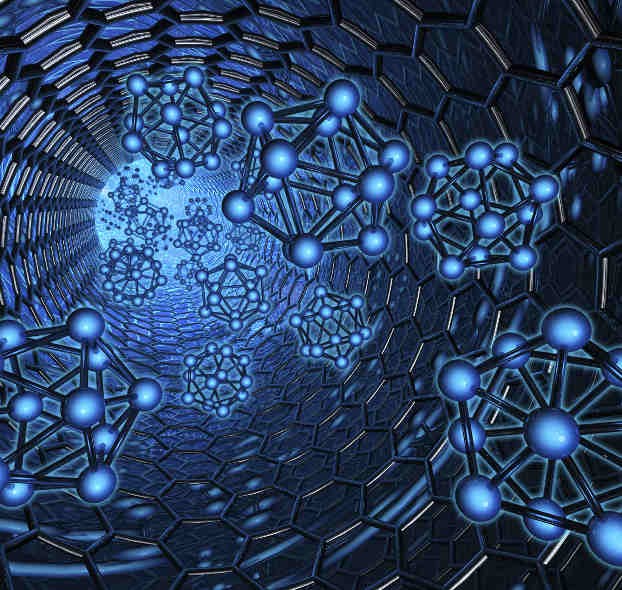AN INTRODUCTION TO NANOTECHNOLOGY: MEDICAL APPLICATIONS
By Tanvi Vaghjiani
The glory of the bioengineering industry is that through the coupling of innovation with the sciences, and bridging the natural world with advancing technology, new solutions can be derived to tackle problems faced by the human population. My interest in this industry was further enhanced as I began to research the use of nanotechnology and nanoparticles in medicine.
The term Nanotechnology was first introduced in 1974 at the Tokyo Science University defined as the process that consists of the separation, consolidation and deformation of materials by one atom or molecule. However, due to the continuous evolution and development of this field of research, there isn’t only one definition that scientists seem to agree on. The use of nanoparticles aims to create and control biological, chemical and physical properties in materials at the nanoscale (dimensions between 1 and 100 nanometres).
Nanoparticles of a material show different properties in comparison to the larger particles of the same material. For example, forces of attraction between surfaces are weaker on a larger scale yet are the opposite on a nanoscale. There are two main forms of nanomaterials: natural and artificial. Natural nanomaterials exist in biological systems such as in viruses and bone material whereas artificial materials are those produced using a range of experiments. Examples include carbon-based, metal-based or dendrimers (Nano-sized polymers created from branched units).
Nanotechnology has become extremely useful within the medical industry in recent times with developing studies, showing that the use of nanoparticles can allow efficient drug delivery and earlier detection of diseased cells. The reason why nanoparticles are attractive to medical applications is due to their unique features of the large surface area to mass ratio and the ability to absorb and carry other components. As the applications being currently under investigation, some techniques are only imagined while others are at different stages of testing.
One application of nanotechnology in medicine involves using nanoparticles to deliver drugs, heat or other substances to specific types of cells (e.g. cancer cells). These particles are engineered to attract diseased cells, which allows direct treatment of them and reduces damage to healthy cells in the body, as well as allowing for earlier detection of the disease. Methods for drug delivery includes passing the nanoparticles through a section of artery that is mostly blocked by a clot at sheer force, to help remove it. Additionally, the potential to cross the blood brain barrier due to the size of the particles opens new ways for drug delivery to the brain. For example, researchers in Houston have demonstrated a targeted drug delivery system in mice using silicon nanoparticles that degrade inside a tumour, releasing polymer strands that form a nanoparticle containing the drug. This polymer dissolves inside the cancer cells and delivers the drug.
Although this technology is sustainable, there are a few complications that may arise with the use of nanoparticles in drug delivery. An example is the toxicity, as some properties can cause nanoparticles to be more toxic than others. Therefore, understanding these properties can lead to the development of safer drug delivering nanoparticles. Furthermore, inhalation of engineered nanoparticles can also occur and this can be extremely dangerous.
Although nanotechnology is currently under experimentation, I believe that the use of this unique field of research will become extremely important in the medical industry and with the continuous development of this technology, the future of bioengineering will grow significantly.
